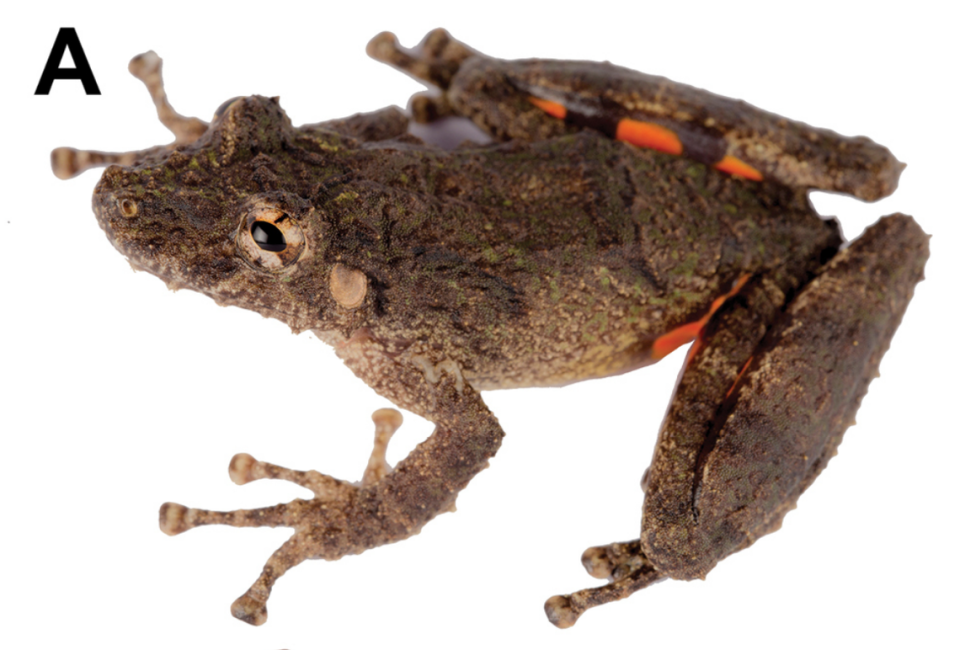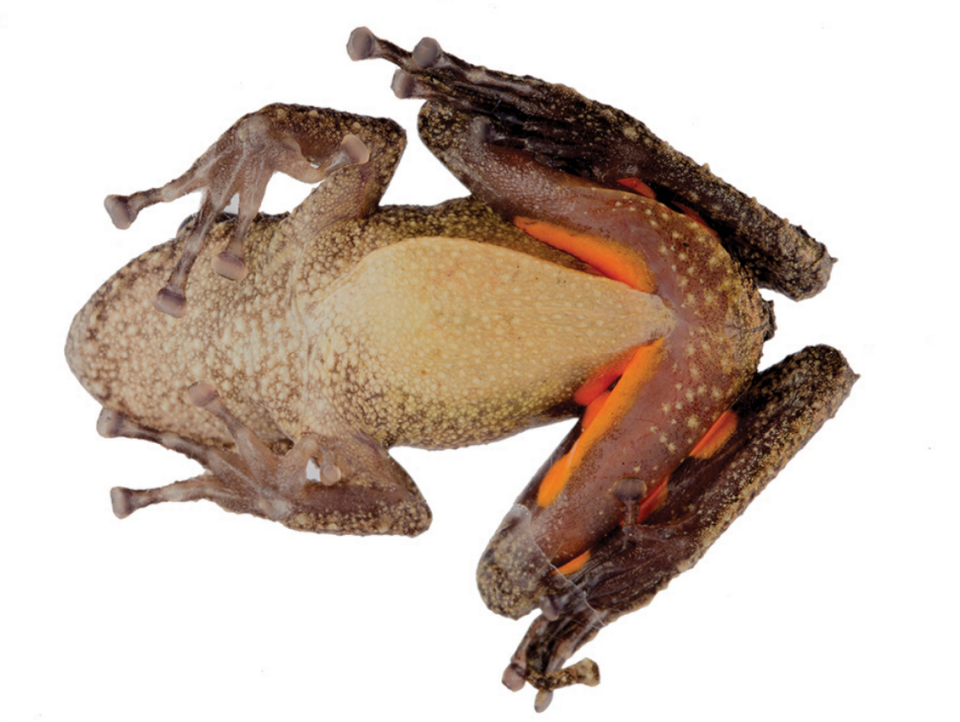‘Uncommon’ creature — with ‘groins of fire’ — discovered as new species in Peru
Walking through the Peruvian Amazon at night, a pair of researchers noticed something tucked among the leaves. The scientists took a closer look at the creature — and discovered a new species.
Study co-authors Germán Chávez and Wilmar Aznaran were surveying a “well-visited” lowland forest in central Peru, Chávez wrote in a May 17 Pensoft blog post. One night, they spotted a small treefrog unlike any they’d ever seen.
“We were quite surprised and kind of speechless,” Chávez said in the blog post. “Externally, the frog is clearly different from any other similar species, and that was evident for us at the very moment we caught it.”
Seen from the top, the roughly 1.5-inch-long treefrog has a dark brown coloring with some speckles of green, according to a study published May 9 in the journal Evolutionary Systematics. The animal’s skin looks almost bumpy and textured, photos show.

From the underside, the treefrog has “bright orange blotches” along its groins, thighs and legs, researchers said. Photos show the frog’s cream-colored stomach and vibrant, almost fluorescent, orange spots.
Researchers named the new species Scinax pyroinguinis, a Latin name meaning “groins of fire,” after the creature’s “striking” coloring. The name also refers to “the flames of the wildfires threatening its habitat,” the study said.
Scinax pyroinguinis was found only in a small forest patch near the Ucayali River, the study said. The treefrog’s habitat “was surrounded by farms where vegetation has been burnt or converted to pastures.” The remaining forest is still at risk of wildfires.

“We hope that this discovery encourages people and institutions to protect these remnant forests in central Peru, because they may yet harbour unknown species,” Chávez wrote in the blog post. “ If these forests disappear, we will probably lose a diversity that we do not even know now yet, and may never will.”
The new species is morphologically and genetically distinct from other treefrog species, the study said.
Researchers described Scinax pyroinguinis as an “uncommon” animal. In 108 days searching for the treefrog, researchers found only two specimens, the study said.
Still, researchers “tentatively” identified Scinax pyroinguinis as the “most basal” species of its taxonomic group, the study says. This evolutionary categorization means the newly discovered frog likely gave rise to other species of treefrog.
Chávez told McClatchy News that he hopes to study the new species further in upcoming surveys. “We still need to know more about its reproduction and population status. Our hopes are lying on the next rainy season,” he said.
The Ucayali River is about 330 miles northeast of Lima.
CORRECTION (5/23): The journal where the study was published was corrected to Evolutionary Systematics.
‘Calm’ creature burrowing underground discovered as new species in India, study says
‘Mini-kangaroos’ — who love peanut butter — thrive after reintroduction to Australia
‘Cryptic’ creatures try to bite scientists as they look closer at new species in India

